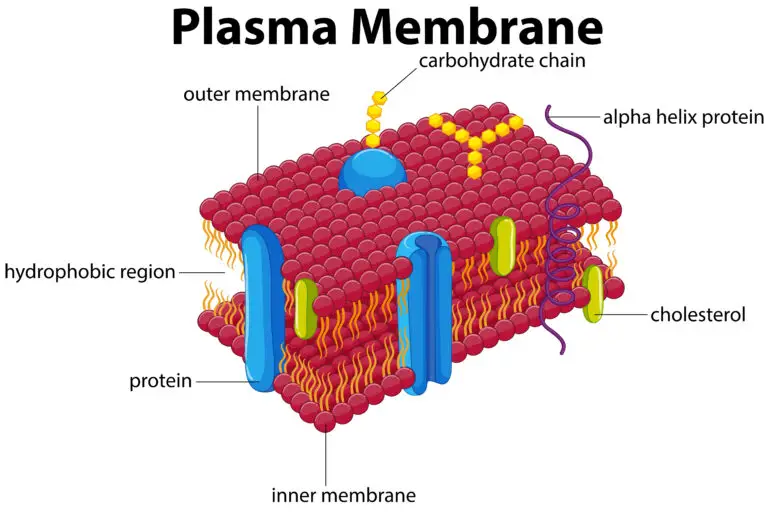Plasma Membrane

Table of Contents
What is a Plasma Membrane
The plasma membrane, also known as the cell membrane, is a selectively permeable boundary that separates the interior of a cell from its external environment. It plays a crucial role in maintaining the integrity of the cell and controlling the passage of substances into and out of the cell. The plasma membrane is a dynamic structure with various components contributing to its functions.
Components of the Plasma Membrane
Phospholipid Bilayer
The basic structural framework of the plasma membrane is the phospholipid bilayer. Phospholipids are molecules with a hydrophilic (water-attracting) head and hydrophobic (water-repelling) tails. In the bilayer, phospholipids align with their hydrophilic heads facing outward toward the aqueous environment, and their hydrophobic tails facing inward, creating a semi-permeable barrier.
Proteins
Proteins are embedded within the phospholipid bilayer and can have various functions. There are two main types of membrane proteins:
- Integral Proteins: Span the entire lipid bilayer and may serve as channels, receptors, or transporters.
- Peripheral Proteins: Associate with the membrane’s surface and play roles in cell signaling, support, and communication.
Carbohydrates
Carbohydrates are often bound to proteins (glycoproteins) or lipids (glycolipids) on the extracellular surface of the membrane. These carbohydrate chains play a role in cell recognition, adhesion, and communication.
Cholesterol
Cholesterol molecules are interspersed within the phospholipid bilayer. Cholesterol helps maintain the fluidity and stability of the membrane by preventing fatty acid chains from packing too closely together.
Fluid Mosaic Model
The fluid mosaic model describes the dynamic nature of the plasma membrane. It suggests that the membrane is a fluid, flexible structure with various components (lipids, proteins, and carbohydrates) that can move laterally within the bilayer.
Functions of the Plasma Membrane
Selective Permeability: The plasma membrane regulates the passage of substances into and out of the cell. It allows some molecules to pass through while restricting the movement of others.
Cell Signaling: Membrane proteins play a crucial role in cell signaling by receiving signals from the external environment and transmitting them to the interior of the cell. This is essential for coordinating cellular responses.
Cell Adhesion: The plasma membrane is involved in cell adhesion, allowing cells to bind to each other. This is important for maintaining tissue structure and facilitating communication between cells.
Transport of Molecules: Membrane proteins facilitate the transport of ions and molecules across the membrane through processes such as active transport, passive transport, and facilitated diffusion.
Exocytosis and Endocytosis: The plasma membrane is involved in vesicular transport processes, such as exocytosis (export of materials from the cell) and endocytosis (uptake of materials into the cell).
Cell Recognition: Carbohydrates on the extracellular surface of the membrane are involved in cell recognition and identification. This is crucial for immune responses and interactions between different cell types.
Structural Support: The plasma membrane provides structural support and shape to the cell, contributing to its overall integrity.
Related Links
Epithelial Tissue
Prokaryote
Cellular Respiration
Placenta